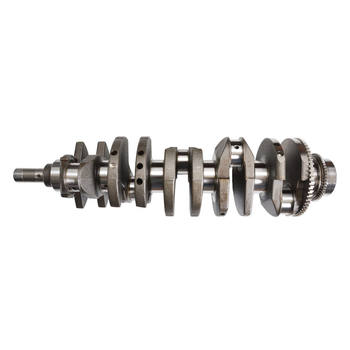Unraveling the Mystery of Engine Performance
When it comes to engine performance, there are many factors that contribute to the power output, fuel efficiency, and overall performance of an engine. Interestingly enough, one often overlooked aspect is the crankshaft geometry. In my experience, optimizing crankshaft geometry can significantly enhance engine breathing and volumetric efficiency. But how does it all work?
The Role of Crankshaft Geometry in Engine Breathing
To begin, let's discuss the concept of engine breathing. In essence, engine breathing is the process by which an engine takes in air and expels exhaust gases. The crankshaft plays a critical role in this process, as it converts the reciprocating motion of the pistons into rotational motion. The geometry of the crankshaft, specifically the crank throw and rod length, can impact the engine's ability to efficiently draw in air and expel exhaust gases.
Optimizing Volumetric Efficiency through Crankshaft Geometry
Now that we understand engine breathing let's delve into volumetric efficiency. Volumetric efficiency is a measure of how effectively an engine can draw in air during the intake stroke. A higher volumetric efficiency means that the engine can draw in more air, which can lead to increased power output and improved fuel efficiency. So, how can crankshaft geometry help improve volumetric efficiency?
The Impact of Crank Throw and Rod Length
As it turns out, the crank throw and rod length have a significant impact on volumetric efficiency. A longer crank throw can increase the distance the piston travels during the intake stroke, which can lead to a higher volumetric efficiency. Conversely, a shorter crank throw can decrease the piston's travel distance and reduce volumetric efficiency. Similarly, a longer rod length can improve engine breathing by increasing the leverage on the crankshaft, while a shorter rod length can have the opposite effect.
Practical Applications: Optimizing Your Engine's Performance
Now that we understand the relationship between crankshaft geometry and volumetric efficiency, let's explore some practical applications. Here are a few tips for optimizing your engine's performance through crankshaft geometry:
Conclusion: The Power of Crankshaft Geometry
In conclusion, optimizing crankshaft geometry is a powerful way to enhance engine breathing and volumetric efficiency. By carefully considering factors such as crank throw and rod length, you can unlock your engine's full potential and enjoy improved power output and fuel efficiency. So, if you're looking to take your engine's performance to the next level, don't overlook the importance of crankshaft geometry.
But here's the thing - optimizing crankshaft geometry is just one piece of the puzzle. To truly maximize your engine's performance, you'll also want to consider factors such as camshaft timing, compression ratio, and fuel delivery. By taking a holistic approach to engine optimization, you can create a powerful, efficient, and reliable engine that will serve you well for years to come.




